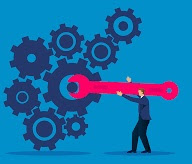Summarizing - Art of developing influence

As we have discussed the art of influencing for the last 14 weeks, let us summarise the key learnings.
- While we go up the career ladder, beyond a certain point, we need to get things done beyond our functional boundary, and positional power alone will not help. We need to develop influencing skills to get things done.
- We need to be aware of our dominant influencing style (logical, commanding, balancing, or engaging) and be mindful of other person's influencing styles. We need to modify depending on the context and other people's styles. Most workplace problem is due to inflexibility in influencing style.No single style will help in all situations. It is more about awareness.
- We can see some patterns in highly influencing people in the workplace. Two things we can learn from them. One is their mindset or thinking pattern, and the other is their behavior or practices to influence others.
- They operate with a WIN-WIN philosophy and always look at maximizing their impact and others in every interaction.
- They will always look at the position with pride and make their body language and tone positive, which helps to influence others easily.
- They have a high level of clarity of what they want in each interaction/task and operate an outcome-based thinking process.
- They put their continuous effort into building their credibility by developing expertise or improving relationships with others.
- They display respect for others by keenly listening
- They empower others by outlining the task and not indulging in micro-management, however available when the situation is required for the people
- They are good at communication, and they are more expressive while explaining the need for the task
- They will always look for fixing the process than people.
- They will develop charisma by being authentic in their domain.
To summarise, developing the art of influencing takes time and effort. However, the payoff will be high for any professional's growth, and everyone has to invest in it.
Have a great week ahead!



 ), if any problem happens, the momentary reaction would be, "Why this happened, and what needs to be done?". Their immediate intention would be to recognize the problem and look for a suitable process, eventually fixing the people.
), if any problem happens, the momentary reaction would be, "Why this happened, and what needs to be done?". Their immediate intention would be to recognize the problem and look for a suitable process, eventually fixing the people.












